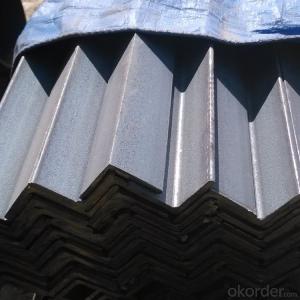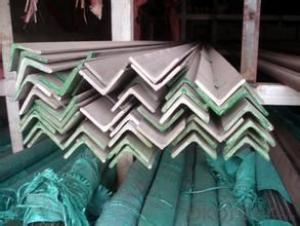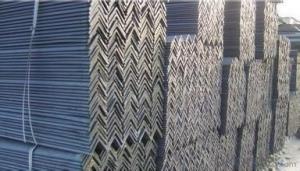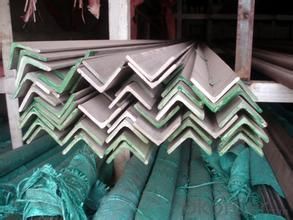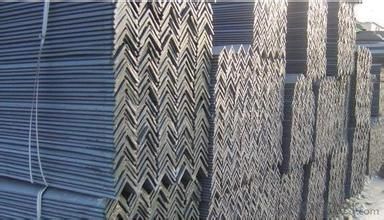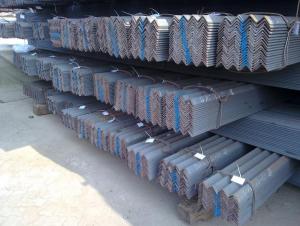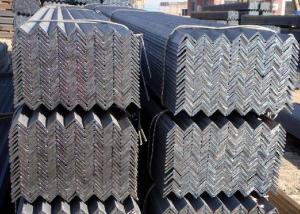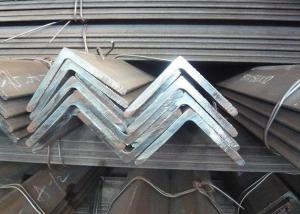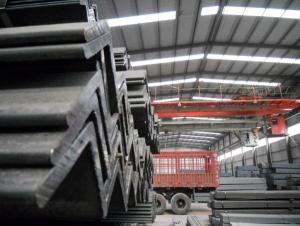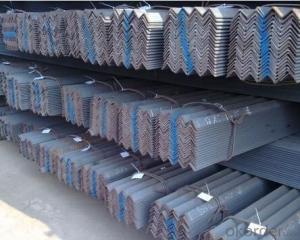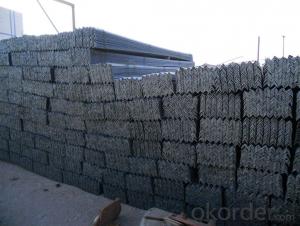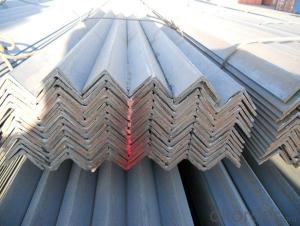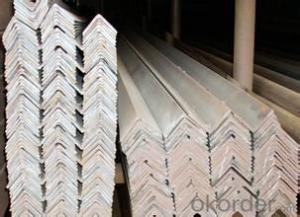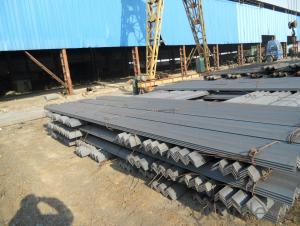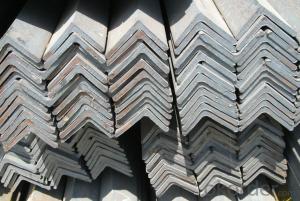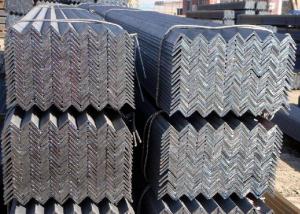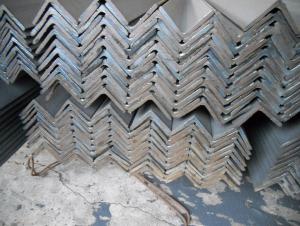EN10056 galvanized angle steel for construction
- Loading Port:
- Tianjin
- Payment Terms:
- TT OR LC
- Min Order Qty:
- 25 m.t.
- Supply Capability:
- 10000 m.t./month
OKorder Service Pledge
OKorder Financial Service
You Might Also Like
Product Description:
Specifications of Equal Angle Steel
1.Standards:GB
2.Length:6m, 12m
3.Material:GBQ235, Q345 or Equivalent
4. Size:
Size (mm) | Mass (mm) | Size (mm) | Mass (mm) |
| 30*30*2.7 | 1.246 | 30*30*4 | 1.786 |
| 30*30*3.0 | 1.373 | 30*30*5 | 2.184 |
Usage & Applications of Equal Anlge Steel
Trusses;
Transmission towers;
Telecommunication towers;
Bracing for general structures;
Stiffeners in structural use.
Packaging & Delivery of Equal Angle Steel
1. Transportation: the goods are delivered by truck from mill to loading port, the maximum quantity can be loaded is around 40MTs by each truck. If the order quantity cannot reach the full truck loaded, the transportation cost per ton will be little higher than full load.
2. With bundles and load in 20 feet/40 feet container, or by bulk cargo, also we could do as customer's request.
3. Marks:
Color mark: There will be color marking on both end of the bundle for the cargo delivered by bulk vessel. That makes it easily to distinguish at the destination port.
Tag mark: There will be tag mark tied up on the bundles. The information usually including supplier logo and name, product name, made in China, shipping marks and other information request by the customer.
If loading by container the marking is not needed, but we will prepare it as customers' request.
*If you would like to get our price, please inform us the size, standard/material and quantity. Thank you very much for your attention

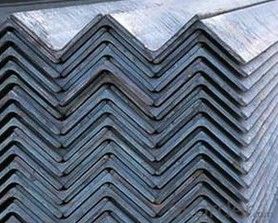
- Q: Can steel angles be used in seismic or high-wind areas?
- Yes, steel angles can be used in seismic or high-wind areas. Steel angles are commonly used in construction for their strength and durability. They are able to withstand the forces exerted during seismic events or strong winds, making them a suitable choice for such areas. Additionally, steel angles can be designed and reinforced to meet specific requirements for these challenging conditions.
- Q: What are the different testing methods for steel angles?
- There are several testing methods for steel angles, including visual inspection, dimensional measurement, hardness testing, chemical analysis, and mechanical testing. Visual inspection involves examining the angles for any visual defects or irregularities. Dimensional measurement ensures that the angles meet the specified size and shape requirements. Hardness testing determines the hardness of the steel, which is an important factor in its strength and durability. Chemical analysis is performed to check the composition and purity of the steel, ensuring that it meets the required standards. Mechanical testing involves subjecting the steel angles to various loads and stresses to evaluate their mechanical properties such as strength and ductility.
- Q: How do steel angles contribute to the sustainability of a project?
- Steel angles contribute to the sustainability of a project in several ways. Firstly, they are made from recycled steel, reducing the demand for new raw materials and promoting a circular economy. Secondly, steel angles have a high strength-to-weight ratio, allowing for lighter and more efficient structural designs, which in turn reduces the amount of steel required and minimizes the carbon footprint of the project. Lastly, steel angles are durable, resistant to corrosion, and have a long lifespan, ensuring the longevity and sustainability of the structure they support.
- Q: How do you specify steel angles in a construction project?
- When specifying steel angles in a construction project, one must consider their dimensions, grade, and any additional requirements. The dimensions are typically described as the length of each leg and the thickness of the material. For instance, a common specification may be "2-inch by 2-inch by 1/4-inch steel angle". The grade of the steel angle is also crucial to determine its strength and durability. Common grades include A36, A572, and A588. The selection of the grade depends on the project's structural requirements and environmental conditions. Apart from dimensions and grade, any additional requirements like corrosion resistance, fire resistance, or special finishes should be clearly stated. For example, if the steel angles will be exposed to outdoor elements, they might need to be hot-dip galvanized or coated with a protective paint. It is essential to refer to relevant codes and standards, such as the American Institute of Steel Construction (AISC) manual, for guidance on specifying steel angles in a construction project. These codes provide guidelines on allowable stress, design criteria, and other factors to ensure the safe and efficient use of steel angles in structural applications.
- Q: What is the maximum allowable torsional stress for a steel angle?
- The maximum allowable torsional stress for a steel angle depends on various factors such as the type of steel, its dimensions, and the specific application. Therefore, it is not possible to provide a specific value without more information.
- Q: How do you clean and maintain steel angles?
- To clean and maintain steel angles, start by removing any surface dirt or debris using a soft cloth or brush. Then, prepare a mixture of mild soap and warm water and use it to wipe down the angles thoroughly. Rinse the angles with clean water and dry them completely to prevent rust formation. It's advisable to apply a light coat of oil or a rust inhibitor to protect the steel angles from corrosion. Regular inspections and prompt removal of any accumulated dirt or moisture will help maintain the steel angles' quality and prolong their lifespan.
- Q: What are the considerations for selecting the appropriate steel angle length?
- When choosing the right length for a steel angle, there are several factors to consider. Firstly, the intended purpose of the steel angle is crucial. The length should be determined based on the specific application it will be used for. For instance, if it is being used for structural purposes, the length should be chosen to provide the necessary strength and support for the intended load. Secondly, the size and dimensions of the project or structure should be taken into account. The length of the steel angle should be determined based on the overall size and scale of the project. This includes considering the height, width, and overall dimensions of the structure where the steel angle will be used. Moreover, it is important to consider the weight and load-bearing capacity of the steel angle. The length should be selected to ensure that it can support the expected load without bending or buckling under pressure. Consulting engineering specifications and load calculations is crucial to determine the appropriate length based on the anticipated weight and load requirements. Additionally, the availability and cost of the steel angle should be considered. Different lengths may have varying availability and cost implications. It is important to assess the availability and cost of different lengths to determine the most suitable option that meets both budgetary and project requirements. Lastly, consulting relevant building codes, regulations, and industry standards is essential when choosing the appropriate steel angle length. These guidelines provide specific requirements and recommendations for structural elements, including steel angles. Complying with these standards ensures the safety and integrity of the structure. In conclusion, the factors to consider when selecting the appropriate steel angle length include the intended use, size and dimensions of the project, weight and load-bearing capacity, availability and cost, as well as compliance with building codes and industry standards. By taking these factors into account, one can ensure the selection of a steel angle length that is suitable for the specific application and requirements.
- Q: What are the different types of steel angles used in modular furniture?
- There are several types of steel angles commonly used in modular furniture. These angles are typically made from various grades of steel, including stainless steel and mild steel, and come in different shapes and sizes to suit different furniture designs and applications. 1. L-shaped angles: L-shaped angles, also known as unequal angles, are one of the most common types used in modular furniture. They have one longer leg and one shorter leg, forming a 90-degree angle. These angles are often used to provide structural support and stability to furniture components, such as table legs or shelf brackets. 2. Equal angles: Equal angles, also called square angles, have two legs of equal length that form a 90-degree angle. They are commonly used in furniture frames, providing rigidity and strength to the structure. Equal angles are versatile and can be used for various applications, including creating corners and joints. 3. V-shaped angles: V-shaped angles, also known as triangular angles, are often used in modular furniture to create decorative accents or design elements. These angles have two legs that meet at a point, forming a V shape. They can be used to add visual interest to furniture pieces, such as chair backs or table bases. 4. Flat bars: Although not technically angles, flat bars are often used in modular furniture construction. They are long, rectangular-shaped steel bars with a flat surface and can be used to reinforce furniture frames or create structural elements like crossbars or supports. 5. Perforated angles: Perforated angles have holes or slots along their length, making them suitable for adjustable shelving systems. These angles allow for easy installation and adjustment of shelves at different heights, providing flexibility in organizing and customizing modular furniture. It is worth noting that the specific type of steel angle used in modular furniture can vary depending on factors such as the desired strength, aesthetics, and functionality of the furniture piece. Different manufacturers and designers may have their own preferences and specifications when selecting steel angles for their modular furniture designs.
- Q: What are the different types of steel angles used in architectural applications?
- There are several types of steel angles commonly used in architectural applications, including equal angles, unequal angles, L-shaped angles, and T-shaped angles. These angles are used to provide structural support, enhance aesthetics, and create unique design features in buildings.
- Q: Can steel angles be used in playground or recreational equipment?
- Yes, steel angles can be used in playground or recreational equipment. Steel angles are a versatile and strong structural material that can be used for various purposes in playground or recreational equipment. They provide stability, support, and durability, making them suitable for use in structures such as climbing frames, swing sets, slides, and other equipment. Steel angles are commonly used to create frames, posts, and supports in playground equipment due to their ability to withstand heavy loads, impact forces, and harsh weather conditions. Additionally, steel angles can be easily customized and fabricated to meet specific design requirements, ensuring the safety and functionality of the equipment.
Send your message to us
EN10056 galvanized angle steel for construction
- Loading Port:
- Tianjin
- Payment Terms:
- TT OR LC
- Min Order Qty:
- 25 m.t.
- Supply Capability:
- 10000 m.t./month
OKorder Service Pledge
OKorder Financial Service
Similar products
Hot products
Hot Searches
Related keywords
